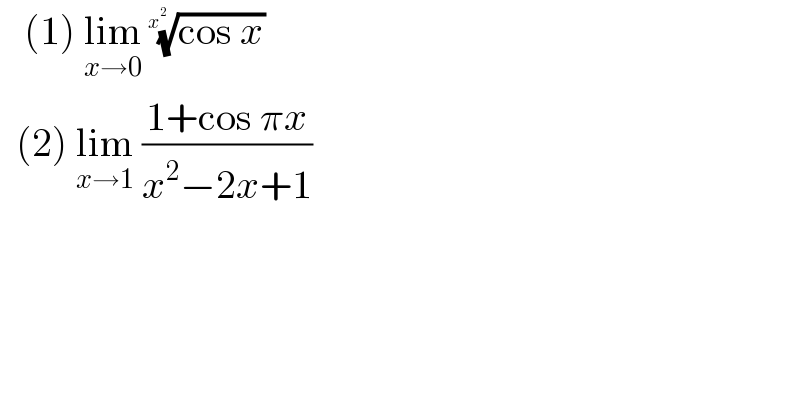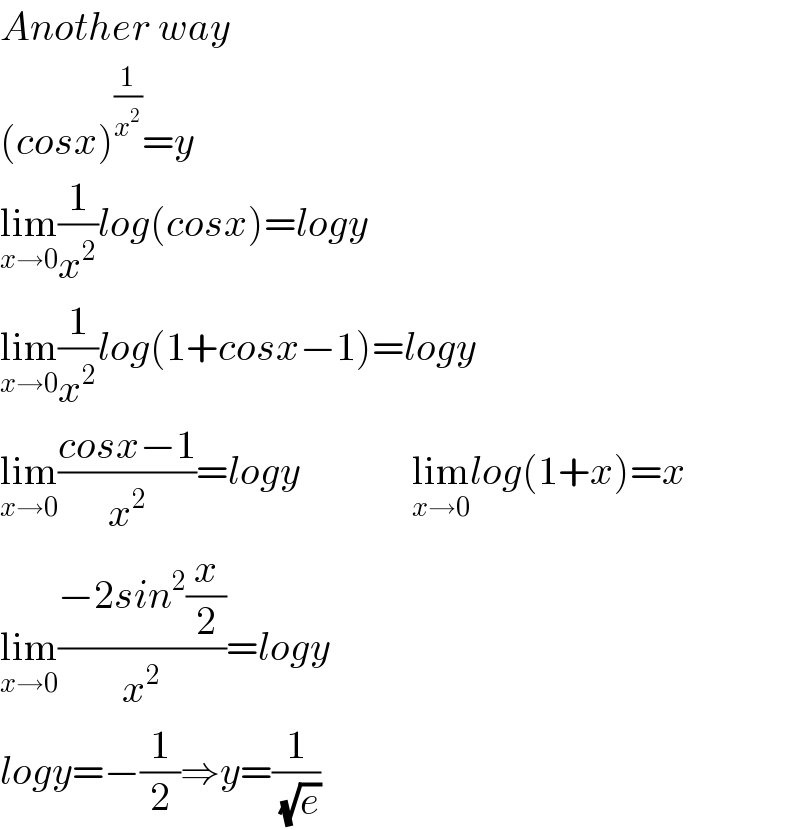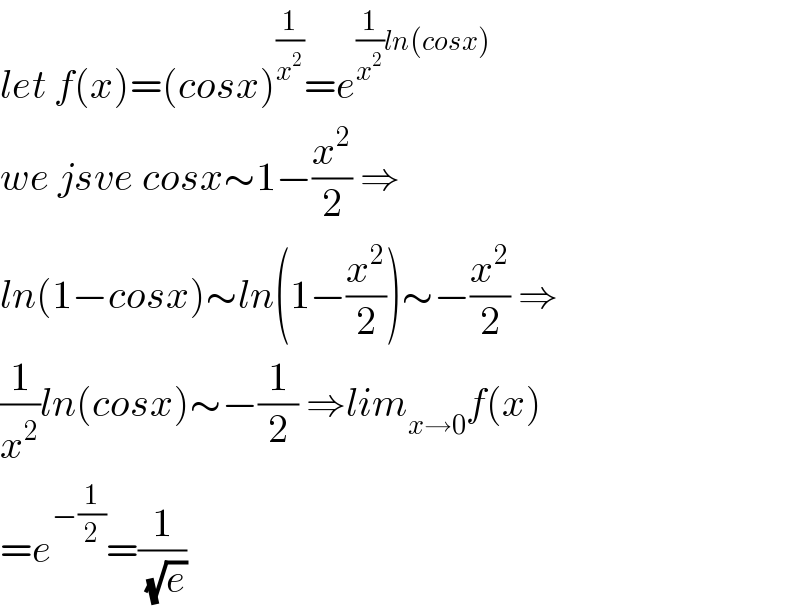
Question and Answers Forum
Question Number 118427 by bramlexs22 last updated on 17/Oct/20

Answered by Dwaipayan Shikari last updated on 17/Oct/20

Commented by Dwaipayan Shikari last updated on 17/Oct/20

Answered by Dwaipayan Shikari last updated on 17/Oct/20

Answered by TANMAY PANACEA last updated on 17/Oct/20

Answered by benjo_mathlover last updated on 17/Oct/20

Answered by benjo_mathlover last updated on 17/Oct/20

Answered by Bird last updated on 17/Oct/20

Answered by mathmax by abdo last updated on 17/Oct/20

